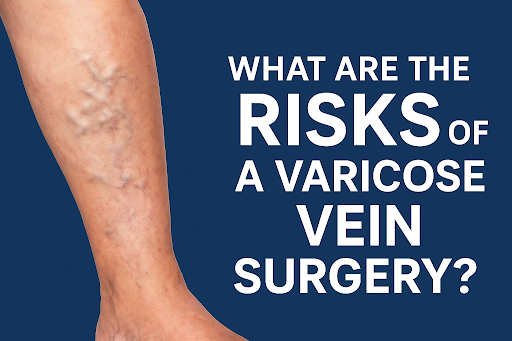Spider veins, those small, twisted blood vessels that appear just beneath the skin’s surface, affect a significant portion of the population. While they are generally harmless, they can cause discomfort and self-consciousness for many people. Fortunately, various treatment options exist to address spider veins, with laser therapy emerging as a particularly effective and popular choice.
Understanding Spider Veins
Spider veins are a common vascular condition characterized by the appearance of small, dilated blood vessels near the surface of the skin. They often manifest as red, blue, or purple lines or webs, typically on the legs but can appear on other parts of the body as well. While they are generally benign, they can be indicative of underlying venous insufficiency or other circulatory issues. Risk factors for spider veins include genetics, hormonal changes, obesity, pregnancy, and prolonged standing or sitting.
Symptoms of spider veins may include itching, burning, or aching sensations around the affected area. In some cases, people may experience swelling or cramping, particularly after extended periods of standing or sitting. While spider veins themselves rarely lead to serious health complications, they can impact one’s quality of life and self-esteem, prompting many to seek treatment options.
Laser Therapy: How Does it Work?
Laser therapy has emerged as a leading treatment option for spider veins due to its precision and effectiveness. During the procedure, a specialized laser device emits concentrated beams of light that target the pigmentation within the spider veins. This light energy heats and damages the blood vessel, causing it to collapse and eventually be reabsorbed by the body. Over time, the treated veins fade from view, leaving behind smoother, clearer skin.
Various types of lasers may be used for spider vein treatment, including diode lasers, Nd:YAG lasers, and pulsed dye lasers. Each type of laser operates at different wavelengths and targets specific colors within the veins, allowing for tailored treatment based on the individual’s needs and skin type.
Advantages of Laser Therapy
One of the primary advantages of laser therapy for spider veins is its non-invasive nature. Unlike surgical procedures, laser therapy does not require incisions or general anesthesia, resulting in minimal discomfort and downtime for the patient. Additionally, laser treatment offers precise targeting, minimizing damage to surrounding tissues and reducing the risk of scarring or pigmentation changes.
Furthermore, laser therapy for spider veins typically yields high success rates, with many patients experiencing significant improvement in the appearance of their veins after just a few sessions. Results are long-lasting, although maintenance treatments may be necessary to address new vein formations or recurrent symptoms.
Preparing for Laser Therapy
Before undergoing laser therapy for spider veins, people should schedule a consultation with a qualified healthcare provider to assess their candidacy for the procedure. During this consultation, the provider will review the patient’s medical history, perform a physical examination, and discuss treatment goals and expectations.
In preparation for laser therapy, patients may be advised to avoid certain medications, such as blood thinners or aspirin, which can increase the risk of bleeding or bruising. Additionally, patients may be instructed to refrain from sun exposure or tanning bed use in the weeks leading up to the procedure to minimize the risk of pigmentation changes or adverse reactions.
The Laser Treatment Process
The laser treatment process typically begins with the application of a topical numbing cream to the treatment area to minimize discomfort during the procedure. Once the skin is adequately numbed, the provider will administer the laser treatment, targeting each spider vein individually.
The duration and number of laser sessions required will vary depending on the size and severity of the spider veins, as well as the patient’s overall treatment goals. Most people require multiple sessions spaced several weeks apart to achieve optimal results. During each session, the provider will adjust the laser settings as needed to effectively target the veins while minimizing damage to surrounding tissues.
Post-Treatment Care and Recovery
Following laser therapy for spider veins, patients may experience mild redness, swelling, or bruising in the treated area. These side effects typically subside within a few days and can be managed with over-the-counter pain relievers and cold compresses.
Providers may also recommend wearing compression stockings or bandages to promote healing and reduce the risk of complications. Patients should avoid strenuous exercise, hot baths, and sun exposure for a period following treatment to allow the skin to heal properly.
Results and Expectations
The results of laser therapy for spider veins are often noticeable within a few weeks of the initial treatment, with continued improvement over the following months as the body gradually absorbs and eliminates the treated veins. While laser therapy can significantly reduce the appearance of spider veins, it may not eliminate them entirely, particularly in cases of severe or extensive vein damage.
Factors such as genetics, lifestyle habits, and underlying medical conditions can influence the long-term success of laser therapy. Some people may require maintenance treatments periodically to address new vein formations or recurrent symptoms.
Alternatives to Laser Therapy
While laser therapy is a highly effective option for spider vein treatment, it may not be suitable for everyone. Alternative treatments, such as sclerotherapy, radiofrequency ablation, or surgical interventions, may be recommended for people with certain types of spider veins or underlying health concerns.
Sclerotherapy involves injecting a sclerosing agent directly into the affected veins, causing them to collapse and eventually fade from view. Radiofrequency ablation utilizes heat energy to seal off problematic veins, while surgical procedures may be necessary for larger or more complex vein formations.
Conclusion
In conclusion, laser therapy offers a safe, effective, and minimally invasive option for addressing spider veins and improving the appearance of the skin. By understanding the benefits, process, and potential outcomes of laser treatment, people can make informed decisions about their vascular health and pursue appropriate treatment options with the guidance of a qualified healthcare provider.








